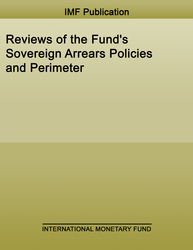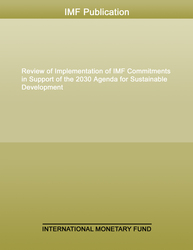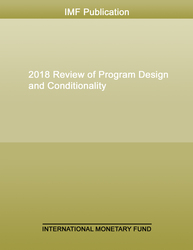
Reviews of the Fund's Sovereign ARREARS Policies and Perimeter
This paper undertakes a comprehensive review of the Fund’s sovereign arrears policies. Given recent developments in the international creditor community, staff proposes refining the Fund’s arrears policies with respect to multilateral creditors.
READ MORE...
Volume/Issue:
Volume 2022
Issue 023
Publication date: May 2022
ISBN: 9798400210556
$5.00
Add to Cart by clicking price of the language and format you'd like to purchase
Available Languages and Formats
| English |
Prices in red indicate formats that are not yet available but are forthcoming.
Topics covered in this book
This title contains information about the following subjects.
Click on a subject if you would like to see other titles with the same subjects.
Exports and Imports , Money and Monetary Policy , Political Economy , executive board understanding , draft executive board understanding , SPR coordinator , fund policy , executive board consideration , Arrears , Debt restructuring , Debt sustainability , Multilateral development institutions , Bonds , Global
Also of interest
Summary
This paper undertakes a comprehensive review of the Fund’s sovereign arrears policies. Staff assesses that the Fund’s Lending into Arrears to Private Creditors (LIA) policy (established in 1989 and last reviewed in 2002) remains broadly appropriate, while recommending some improvements given the experience gained over the last 20 years. Staff also sees merit in codifying the existing practice guiding the Fund in preemptive debt restructurings into a Fund policy, together with an amendment focusing on debt transparency. Given limited experience with the application of the LIOA policy (established in 2015), staff does not propose any amendments but only one restatement confirming current practice. Given recent developments in the international creditor community, staff proposes refining the Fund’s arrears policies with respect to multilateral creditors. Finally, recent developments raise questions about the perimeter between official bilateral and private claims, with significant implications for the Fund’s arrears policies.
Copyright © 2010 - 2025
Powered by:
AIDC



